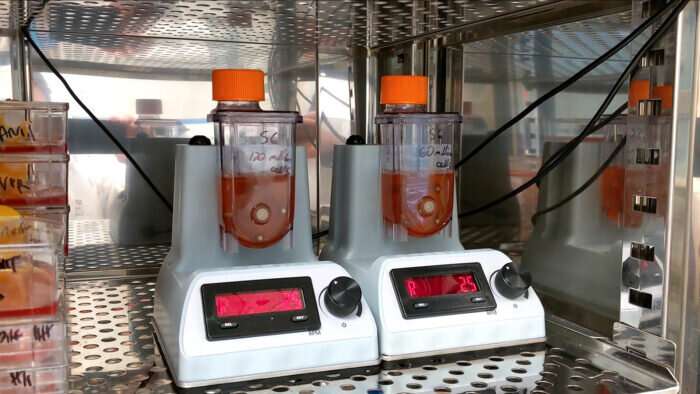This article has been reviewed according to Science X's editorial process and policies. Editors have highlighted the following attributes while ensuring the content's credibility:
fact-checked
peer-reviewed publication
trusted source
proofread
New research may lead to improved insulin-secreting cells derived from stem cells

Diabetes researchers at Washington University School of Medicine in St. Louis have uncovered at least one reason insulin-secreting cells made from stem cells in the lab don't work as well as natural cells. The discovery could help speed progress toward making insulin-secreting cells—called islet beta cells—more effective in the treatment of insulin-dependent type 1 diabetes.
Since scientists first discovered they could sample skin cells or fat cells from people, convert those cells into stem cells and then guide the stem cells to develop into insulin-secreting beta cells, researchers have been attempting to hone the process. The researchers say the new findings, published May 15 in the journal Nature Cell Biology, may help pave the way for producing more efficient and effective beta cells to treat people with insulin-dependent diabetes.
"We have learned several things that could have immediate therapeutic potential for people with diabetes," said senior investigator Jeffrey R. Millman, Ph.D., an associate professor of medicine and of biomedical engineering. "Our findings demonstrate that current methods for generating stem cell-derived beta cells may not be as useful as we would like in treating diabetes."
In this study, the research team used sophisticated single-cell sequencing technology to learn why some beta cells made from stem cells turn out to be less mature and less efficient at making insulin than their natural counterparts.
Using a technique called single-cell multiomic sequencing, the researchers compared stem cell-derived beta cells to natural beta cells and found that cells made from stem cells often didn't make as much insulin in response to glucose. In addition, sometimes the cells' genetic profiles were closer to other cell types found in the gut, such as liver cells or intestinal cells.
Using machine learning and computational methods to examine a vast dataset of DNA from individual beta cells, Millman's team learned that one reason stem cell-derived beta cells tend to be immature involves irregularities in a substance called chromatin in the cells. Chromatin helps "open" and "close" various genes in the beta cells. The researchers would prefer, for one, that the chromatin in the cells keep insulin-secreting genes more open and active while closing down genes that make cells behave more like liver cells, breaking down fat rather than secreting insulin.
"Having learned about chromatin differences between natural beta cells and stem-cell derived beta cells, we believe it will be possible to regulate chromatin to improve the quality of stem-cell derived beta cells, as well as the quantity of the cells that we can produce," Millman said.
He explained that each year about 60,000 people in the United States are diagnosed with insulin-dependent type 1 diabetes. Experts estimate that curing diabetes in that many people would require about 60 trillion functioning beta cells.
"But if we can make the cells more efficient, perhaps we could cut that number in half," Millman said. "We're a long way from being able to do that, but the more efficient the beta cells are, the closer we will be to ramping up the manufacturing necessary to produce treatments."
In another development, Millman's team implanted stem cell-derived beta cells into mice and found that after six months, many of the deficiencies they had identified in such cells were corrected just by placing the cells into a natural environment, as opposed to a culture dish in the lab, suggesting that problems related to chromatin in stem cell-derived beta cells are fixable.
Washington University has licensed Millman's intellectual property to Sana Biotechnology with the goal of making future stem cell-derived therapies for diabetes available to patients.
"Diabetes is a devastating, chronic illness," Millman said. "For many years, our goal has been to help people with diabetes make their own insulin in response to glucose. These findings bring us one step closer to that goal."
More information: Punn Augsornworawat et al, Single-nucleus multi-omics of human stem cell-derived islets identifies deficiencies in lineage specification, Nature Cell Biology (2023). DOI: 10.1038/s41556-023-01150-8




















